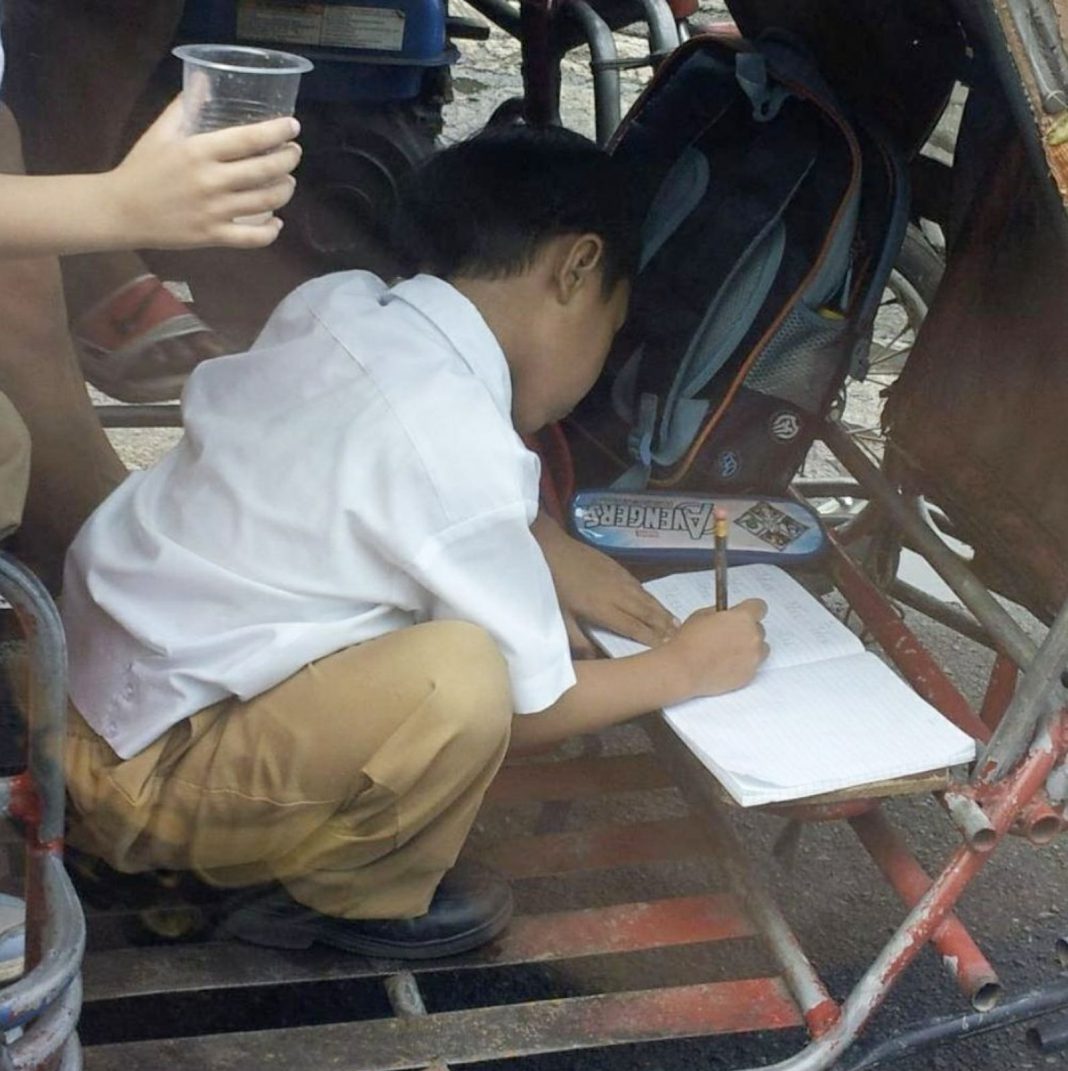A young student studying inside the sidecart of padyak in Malate
Photo file/THEPHILBIZNEWS by MAS
By Victoria “NIKE” De Dios
The Capital Market Development Council (CMDC) is exploring the possibility of creating a Child Trust Fund (CTF) that would provide long-term savings or investment accounts to qualified low-income families so they can have the money to support their children’s tertiary education.
Under this plan, both the national government and the local government units (LGUs) will contribute to the proposed CTF, which will be professionally managed by financial institutions.
National Treasurer Rosalia De Leon presented an overview of the CTF plan during a recent meeting of the CMDC, which is co-chaired by Finance Secretary Carlos Dominguez III, lawyer Benedicta Du-Baladad of the Financial Executives Institute of the Philippines (FINEX) and Securities and Exchange Commission (SEC) chairperson Emilio Aquino.
The concept was adopted from the CTF implemented in the United Kingdom (UK) and Singapore’s Education Endowment or Edusave Scheme, De Leon said.
“The fund can also either be managed by the government and a part of it can also be cut out to be managed by the private sector. We are still on an exploratory stage and we would like to further do a more detailed or granular study on the CTF and to sell it to the Council in the coming meetings,” said De Leon, who also acts as treasurer of the CMDC.
De Leon said that in the UK, more than six million CTF tax-free accounts were set up to prepare for future educational expenses or for any other purpose that would benefit children born between Sept. 1, 2002, and Jan. 2, 2011. The government provided initial seed money of 250 or 500 British pounds per child, with the latter amount for children in poor households.
The funds can be drawn in the UK once the children reach 18 years of age.
In Singapore, the government contributes a total of 4,000 Singapore dollars over ten schooling years of primary and secondary education of each child-beneficiary under its Edusave Scheme, which automatically covers all 7-year old Singaporeans.
With no withdrawal restrictions, the beneficiaries can take out money from their accounts even before their maturity, provided that they use the proceeds for educational purposes. The government closes each account and transfers the unused fund balance once the child-beneficiary reaches 16 years of age.
De Leon said in the Philippines, where education is free from kindergarten to college in all public schools and state tertiary institutions, the proceeds from the CTF can be used to augment funding support for students who would still need daily allowances, transportation expenses, board and lodging and other miscellaneous expenses.
Consuelo Garcia, Liaison Director for Capital Markets of FINEX said that on top of providing an educational fund for kids from low-income families, the CTF’s other goal is to revive the “savings culture” in the country.
She noted that over 50 years ago, the Philippines ranked No. 2 in an Asian Development Bank (ADB) study on the savings of Asian countries in relation to their Gross Domestic Product (GDP).
Today, the Philippines’ ratio is only a low 15 percent, compared to Vietnam and Indonesia with higher savings-to-GDP ratios of 25 and 35 percent, respectively, Garcia said.
“It is actually to be the missing link to what we have right now. The PERA (Personal Equity and Retirement Account (PERA) is for the working class. This one is for young people. The baby boomers already got left behind so I think we could have this as a starting point,” she said.
Moreover, she added, “because you pool the funds and it is professionally managed, you create a pool of funds that are managed professionally by institutional investors and it creates money that can be used to support the ‘Build, Build, Build’ program of the government so it really is a win-win for everyone.”
De Leon noted that a survey was done by the Philippine Statistics Authority (PSA) in 2017 showed that around 18 percent of out-of-school youths have cited financial woes as their main hindrance to getting an education, despite a conditional cash transfer program being implemented by the government.
She said the country’s planned first-ever CTF provides a solution to one of the hindrances to the country’s commitments to the United Nations’ Sustainable Development Goals (SDGs), of which the fourth one is Quality Education.
CTFs and other similar investment accounts benefiting children are already in place in other Asian economies such as South Korea, Hong Kong, and Taiwan, De Leon said.














